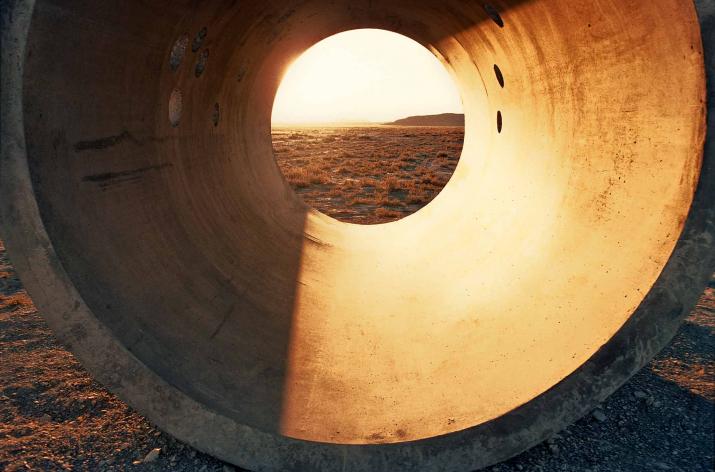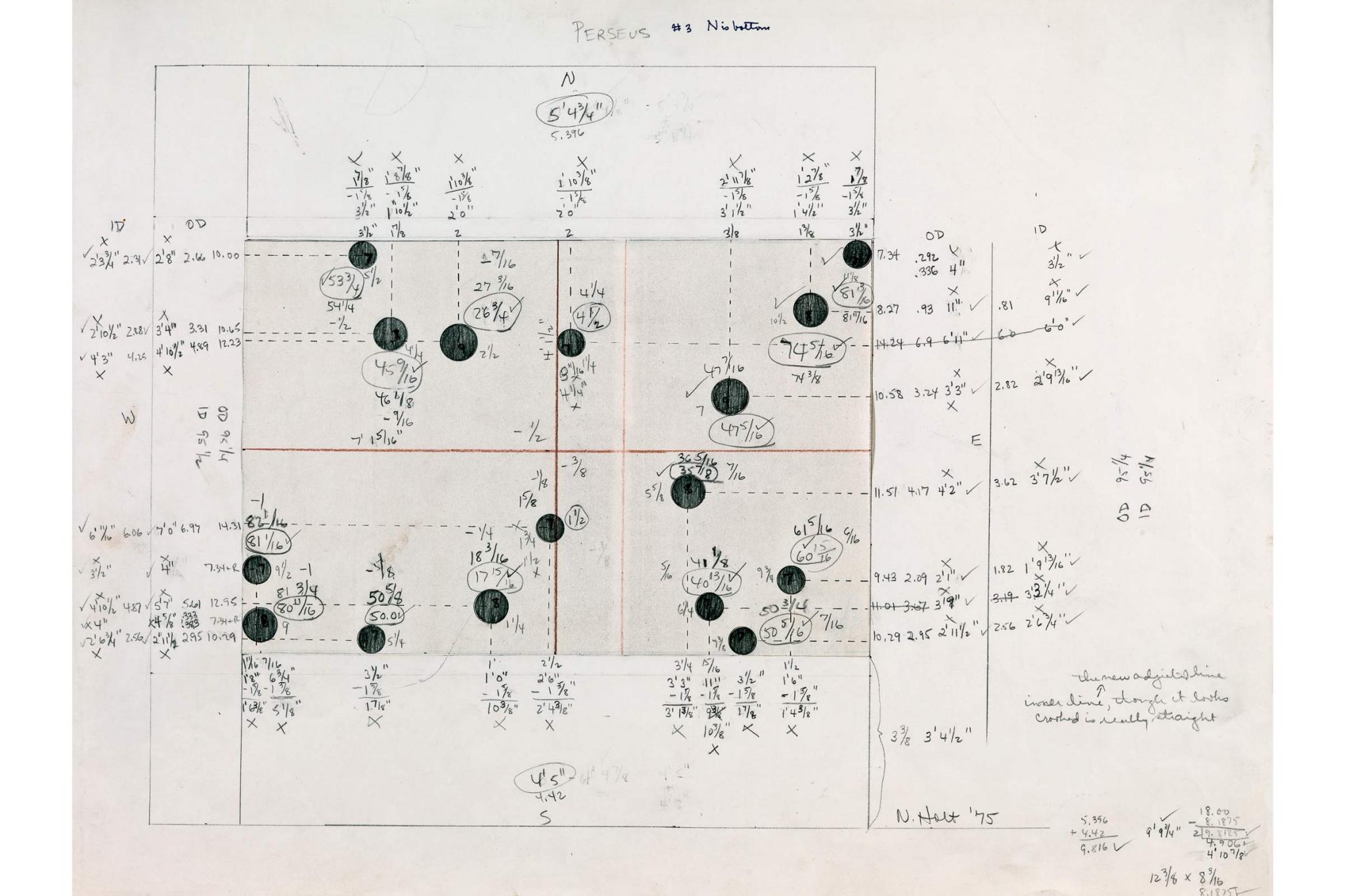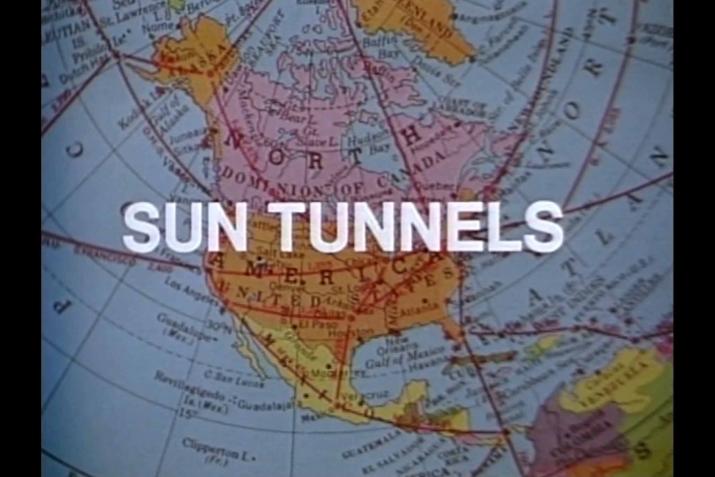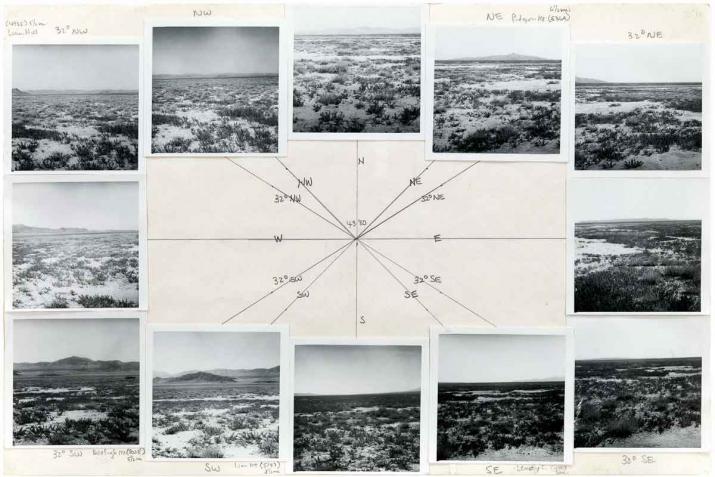
In a remote valley of Utah’s Great Basin Desert, Holt’s massive Sun Tunnels looms along the horizon, visible from over a mile away. The four concrete structures are arranged in a cross formation, positioned precisely to frame the sun as it rises and sets during the summer and winter solstices. Small holes are configured in the concrete to cast projections of constellations along the tunnels’ interior; Draco, Perseus, Columba, and Capricorn materialize out of sunlight, their patterns illuminated upon the viewer inside.


